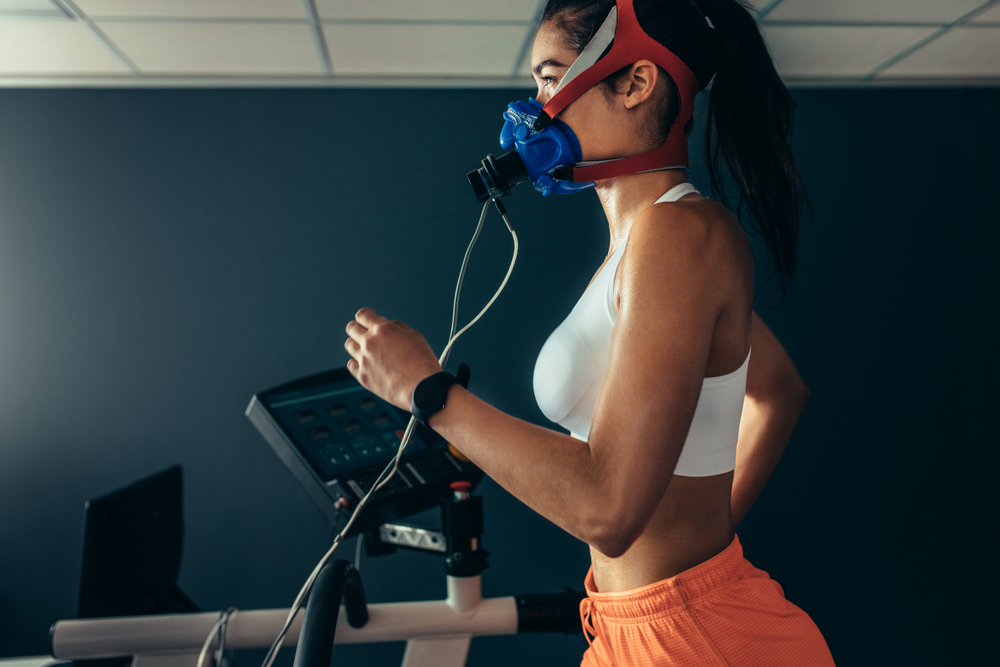Introduction
In the world of sports and fitness, there’s always talk of optimizing performance and pushing limits. One key metric that plays a vital role in enhancing athletic endurance is VO2 max, which measures the maximum amount of oxygen an athlete can use during intense exercise. Understanding and tracking VO2 max is crucial for athletes who want to reach peak performance and gain a competitive edge. This article explores why VO2 max testing is essential for athletes and how it can inform training strategies to boost fitness and performance.
What is VO2 Max?
VO2 max, short for maximal oxygen uptake, refers to the maximum rate at which your body can absorb and utilize oxygen during exercise. It is typically expressed in milliliters of oxygen per kilogram of body weight per minute (mL/kg/min). The higher the VO2 max, the more efficiently your body can deliver oxygen to your muscles, allowing for sustained aerobic performance over longer durations.For endurance athletes—such as runners, cyclists, swimmers, and triathletes—VO2 max is a key indicator of how well their cardiovascular and respiratory systems support their physical efforts. A high VO2 max can help athletes perform at higher intensities for longer periods, making it a critical factor in both training and competition.
Why is VO2 Max Testing Important for Athletes?
VO2 max testing offers a clear, quantifiable measure of an athlete’s aerobic fitness level. While subjective feelings of fatigue and effort can be useful, they don’t provide an objective benchmark. VO2 max testing provides precise data, allowing athletes to measure their cardiovascular capacity and determine where they stand in relation to their fitness goals. For serious athletes, this information is invaluable in shaping effective training regimens.Understanding your VO2 max allows for highly customized training programs. By determining specific heart rate zones that correspond to aerobic, anaerobic, and recovery efforts, athletes can structure their workouts to optimize improvement. Training too hard can lead to burnout, while training too lightly may not yield desired results. Knowing your VO2 max ensures you’re working at the correct intensity to build endurance without overtraining.
Progress Tracking
VO2 max testing provides athletes with a benchmark to track progress over time. Regular testing, especially after specific training cycles, shows how well an athlete’s fitness is developing. Increases in VO2 max demonstrate improvements in cardiovascular health and endurance, while stagnation or declines might signal the need for adjustments to training volume, intensity, or recovery strategies.VO2 max plays a significant role in predicting endurance performance in races. Athletes with a higher VO2 max can maintain higher intensities for longer, giving them a competitive advantage in events such as marathons, triathlons, and cycling races. VO2 max testing helps athletes identify the right pacing strategies based on their oxygen consumption limits, ensuring they perform optimally on race day.
Prevention of Overtraining
Overtraining is a common pitfall for athletes, leading to decreased performance, increased injury risk, and burnout. Regular VO2 max testing can help identify when an athlete’s performance begins to stagnate or decline, indicating the need for more recovery time or adjustments in the training load. This insight helps athletes avoid pushing too hard, thereby reducing the risk of injury and ensuring long-term athletic progress.
How is VO2 Max Tested?
The most accurate VO2 max test involves performing exercise in a controlled lab environment, typically on a treadmill or stationary bike. Athletes wear a mask that measures their oxygen intake and carbon dioxide output as exercise intensity gradually increases. The test continues until the athlete reaches exhaustion, allowing the lab to calculate their maximum oxygen uptake. This method provides precise data but requires specialized equipment. Field tests, such as the Cooper Test (a 12-minute run) or the Rockport Walking Test, can estimate VO2 max based on performance metrics like distance covered. While less accurate than lab testing, these tests offer a practical and accessible way for athletes to assess their VO2 max. Modern fitness devices and smartwatches estimate VO2 max based on heart rate and exercise data. Although these estimates may not be as precise as lab results, they provide athletes with convenient and continuous feedback on their aerobic fitness.
Conclusion
VO2 max testing is a powerful tool for athletes looking to maximize their performance and endurance. Whether you’re an elite competitor or a dedicated recreational athlete, understanding your VO2 max can help you fine-tune your training, track progress, and improve your overall fitness. By leveraging this valuable metric, athletes can unlock their potential and push their performance to new heights.

